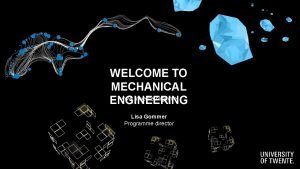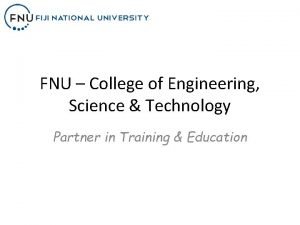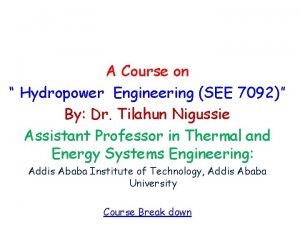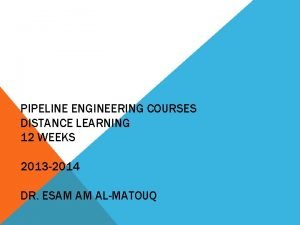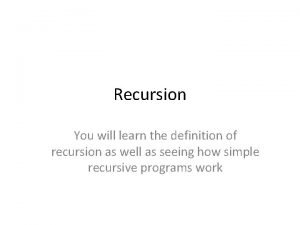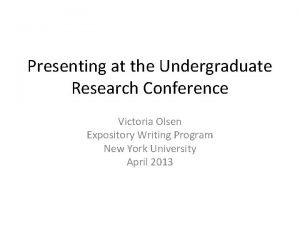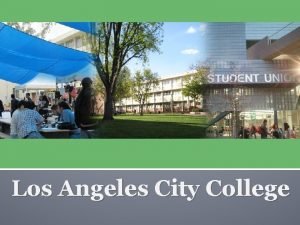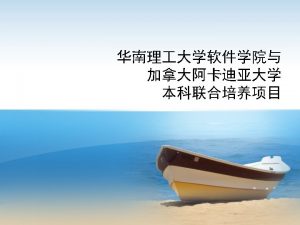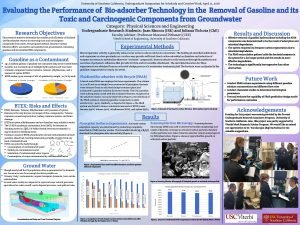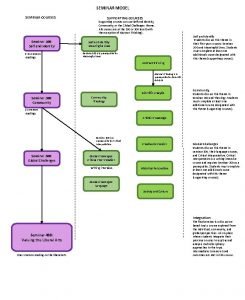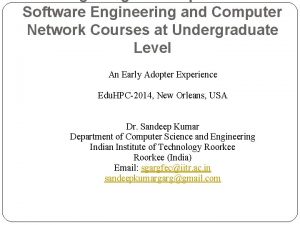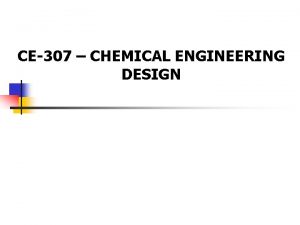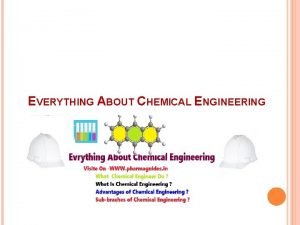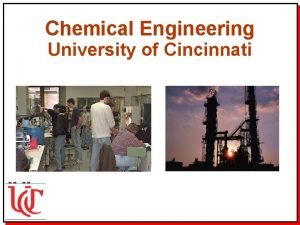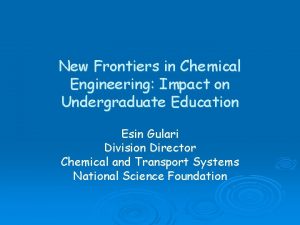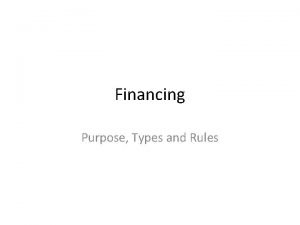CHEMICAL ENGINEERING UNDERGRADUATE COURSES The purpose of this















- Slides: 15

CHEMICAL ENGINEERING UNDERGRADUATE COURSES The purpose of this document is to provide a brief overview of the Chemical Engineering undergraduate courses at the University of Waterloo, especially those courses that will be connected to the Longitudinal Case Study (LCS). Please note that specific course requirements may differ from year to year, and that curriculum links are subject to change. This is only to be used as a general guide, to help you see where your project is headed in future terms. Refer to individual course syllabi for up-to-date expectations.

Term 1 A � Ch. E 100: Chemical Engineering Concepts 1 � Ch. E 102: Chemistry for Engineers � MATH 115: Linear Algebra for Engineering � MATH 116: Calculus 1 for Engineering � PHYS 115: Mechanics

Term 1 A - LCS � Ch. E 100: �Introduction to design problem �Conceptual design & needs analysis �Investigation of design alternatives (literature review) �Initial evaluation of system (material balances) � Ch. E 102: Chemistry for Engineers �Analysis of synthesis techniques

Term 1 B � Ch. E 101: Chemical Engineering Concepts 2 � Ch. E 121: Engineering Computation � Ch. E 161: Engineering Biology � GENE 123: Electrical Engineering � MATH 118: Calculus 2 for Engineering

Term 1 B - LCS � Ch. E 101: �Re-evaluation of system based on newly acquired knowledge (incl. energy balance) �Introduction to Inherently Safer Design (ISD) � Ch. E 121: �Implementation of computational techniques to evaluate process alternatives � Ch. E 161: �Consideration of biological alternatives �Investigation of environmental factors (incl. degradation, toxicity, waste processing)

Term 2 A � Ch. E 200: Equilibrium Stage Operations � Ch. E 220: Process Data Analysis � Ch. E 230: Physical Chemistry 1 � Ch. E 290: Chemical Engineering Lab 1 � CHEM 262/262 L: Organic Chemistry � MATH 217: Calculus 3 for Chemical Engineering

Term 2 A - LCS � Ch. E 200: �Introduction to separation processes �Preliminary equipment sizing and cost estimation � Ch. E 220: �Process troubleshooting and analysis � Ch. E 230: �Application of thermodynamics concepts to plant design � Ch. E 290: Chemical Engineering Lab 1 �Plant modeling in ASPEN

Term 2 B � Ch. E 211: Fluid Mechanics � Ch. E 231: Physical Chemistry 2 � Ch. E 241: Materials Science and Engineering � Ch. E 291: Chemical Engineering Lab 2 � MATH 218: Differential Equations for Enigineers � MSCI 261: Engineering Economics

Term 2 B - LCS � Ch. E 211: �Consideration of pumps and piping sizing �Introduction to piping network design, process & instrumentation diagrams � Ch. E 231: �Application of (non-ideal) reaction kinetics; comparison to ideal behaviours � Ch. E 241: �Investigation of materials for piping/vessels (incl. failure modes & associated impacts) � MSCI 261: �Evaluation of economic feasibility

Term 3 A � Ch. E 311: Chemical Reaction Engineering � Ch. E 312: Heat and Mass Transfer 1 � Ch. E 322: Numerical Methods for Process Analysis and Design � Ch. E 330: Chemical Engineering Thermodynamics � Ch. E 390: Chemical Engineering Lab 3

Term 3 A - LCS � Ch. E 311: �Investigation of optimal reactor design � Ch. E 322: �Modeling & analysis of plant design � Ch. E 330: �Consideration of energy requirements, temperature control, etc.

Term 3 B � Ch. E 313: Heat and Mass Transfer 2 � Ch. E 325: Strategies for Process Improvement and Product Development � Ch. E 331: Electrochemical Engineering � Ch. E 360: Bioprocess Engineering � Ch. E 391: Chemical Engineering Lab 4

Term 3 B - LCS � Ch. E 313: �Incorporation & sizing of heat exchanger � Ch. E 325: �Introduction to process improvement through designed experiments � Ch. E 331: �Investigation of corrosion potential & evaluation of selected materials � Ch. E 360: �Re-evaluation of environmental considerations

Term 4 A � Ch. E 420: Introduction to Process Control � Ch. E 480: Process Analysis and Design � Ch. E 482: Chemical Engineering Design Workshop � Ch. E 490: Chemical Engineering Lab 5

Term 4 A - LCS � Ch. E 420: �Investigation of process controllability � Ch. E 480: �Culmination of project, including full plant model in ASPEN
 Adelien heutink
Adelien heutink College of engineering science and technology
College of engineering science and technology Hydropower engineering courses
Hydropower engineering courses Pipeline engineering courses online
Pipeline engineering courses online Cosmos meaninh
Cosmos meaninh Portland state university tuition
Portland state university tuition Ics academic advising
Ics academic advising Seoul university acceptance rate
Seoul university acceptance rate Definition of undergraduate student
Definition of undergraduate student Undergraduate research conference nyu
Undergraduate research conference nyu Difference between postgraduate and undergraduate
Difference between postgraduate and undergraduate Difference between postgraduate and undergraduate
Difference between postgraduate and undergraduate Cornell nbb
Cornell nbb Lacc math sequence
Lacc math sequence Acadia university undergraduate programs
Acadia university undergraduate programs University of southern california undergraduate
University of southern california undergraduate
